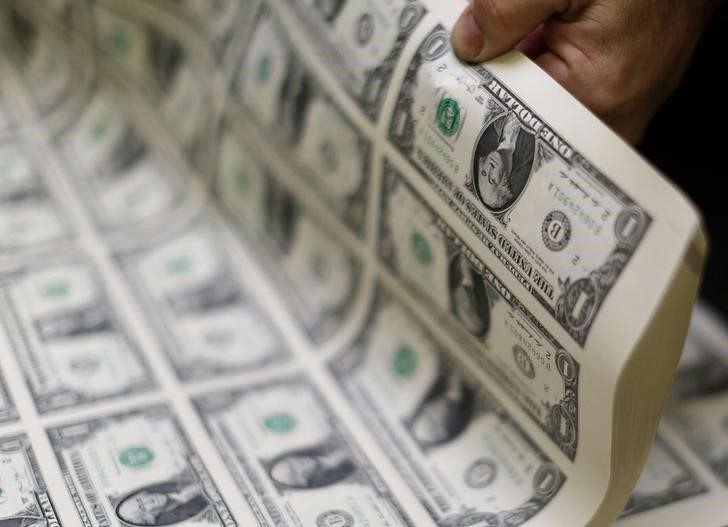Investing.com - The dollar pushed lower against a basket of other major currencies on Wednesday, after data showed that U.S. retail sales rose less than expected in April, adding to concerns over the strength of the economy.
Official data showed that U.S. retail sales including automobiles were flat last month, confounding expectations for a 0.2% rise. March's figure was revised to a 1.1% increase from a previously estimated 0.9% gain.
Core retail sales, which exclude automobiles, increased by 0.1% in April, disappointing expectations for a 0.5% gain. The change in core retail sales for March was revised to a 0.7% increase from a previously estimated 0.4% uptick.
The U.S. dollar index, which measures the greenback’s strength against a trade-weighted basket of six major currencies, was down 0.74% to 93.98, not far from last week's two-month low of 93.96.
EUR/USD was up 0.63% to 1.1283.
The single currency had pulled back from session highs after official data showed that euro area gross domestic product grew 0.4% in the first three months of the year, up from 0.3% in the final quarter of 2014 but slightly below forecasts for growth of 0.5%.
On a year-over-year basis, the bloc's GDP grew 1.0% after a 0.9% expansion in the three months to December. Economists had forecast growth of 1.1%.
The French economy grew 0.6% in the first quarter, the fastest rate of growth in two years, while Germany’s economy grew 0.3% in the first quarter, slowing from 0.7% in the previous quarter.
Data also showed that the euro zone's industrial production slipped 0.3% in March, confounding expectations for a 0.2% rise. February's figure was revised to a 1.0% gain from a previously estimated increase of 1.1%.
GBP/USD rose 0.21% to 1.5703, close to five-month highs of 1.5743 hit earlier in the session.
Sterling mildly weakened after the Bank of England trimmed its forecast for growth this year to 2.4%, down from 2.9% three months ago. It also revised down forecasts for 2016 and 2017 to 2.6% and 2.4% respectively.
The central bank also said it expects inflation, which currently stands at a record-low zero, to return to its 2% target in two years' time, little changed from its last report.
Earlier Wednesday, the U.K. Office for National Statistics said the unemployment rate ticked down to 5.5% last month from 5.6% in March, hitting the lowest level since September 2008.
The report also showed that the U.K. claimant count change dropped by 12,600 in April, confounding expectations for a 20,000 decline.
Elsewhere, the dollar was lower against the yen and the Swiss franc, with USD/JPY sliding 0.44% to 119.32 and with USD/CHF down 0.80% to 0.9218.
The Australian and New Zealand dollars were sharply higher, with AUD/NZD up 1.38% to more than three-month highs of 0.8088 and NZD/USD rallying 1.75% to 0.7490.
Meanwhile, USD/CAD declined 0.64% to trade at 1.1944.
